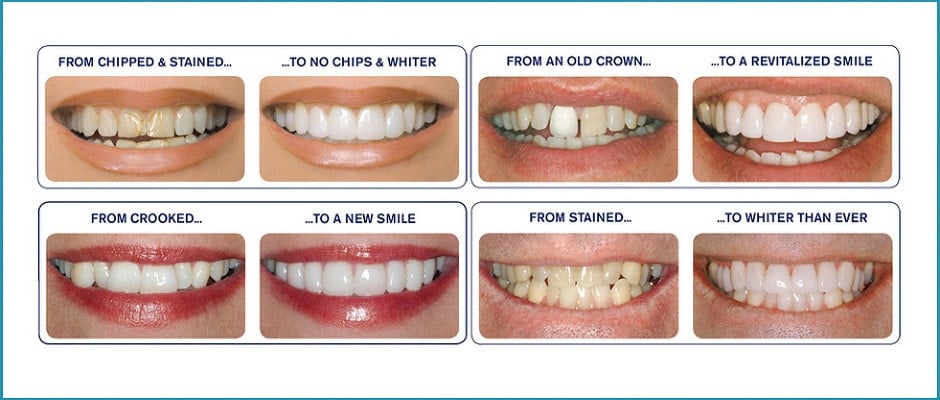Are Veneers Painful to Get? Exploring the Comfort of Dental Veneer Procedures
The Promise of a Perfect Smile
Introduction
Dental veneers have become increasingly popular in recent years as a cosmetic dentistry solution for achieving a flawless smile. Many individuals, however, hesitate to pursue this treatment due to concerns about potential pain and discomfort. If you find yourself pondering the question, “Are veneers painful to get?” read on to discover the truth behind the comfort of dental veneer procedures.
The Veneer Placement Process
Understanding Dental Veneers
Before delving into the discomfort aspect, it is essential to understand what dental veneers are. Veneers are thin, custom-made shells crafted from materials such as porcelain or composite resin. They are designed to cover the front surface of teeth, enhancing their appearance by improving color, shape, size, and alignment.

The Initial Consultation
The process of obtaining veneers begins with an initial consultation with a qualified cosmetic dentist. During this appointment, the dentist will evaluate your oral health and discuss your desired outcomes. X-rays and impressions may be taken to assist in the planning and design of your veneers.
Preparation of Teeth
To accommodate the veneers, a minimal amount of enamel is typically removed from the front surface of the teeth. This step is necessary to ensure a proper fit and natural appearance. While this may sound uncomfortable, it is generally painless, as the dentist will administer a local anesthetic to numb the area beforehand.
Temporary Veneers
After preparing the teeth, your dentist may place temporary veneers to protect the prepared surfaces while the permanent ones are being fabricated. These temporary veneers are usually made of acrylic and are more easily removable than the permanent ones.
Fitting and Bonding
Once your permanent veneers are ready, you will return to the dental office for the fitting and bonding procedure. The dentist will place the veneers on your teeth to ensure a perfect fit and make any necessary adjustments. Before bonding the veneers, the dentist will clean and etch your teeth to create a suitable surface for the adhesive.
The Comfort Factor
Now, let’s address the pressing question: Are veneers painful to get? In general, the veneer placement process is considered minimally invasive and relatively painless. The local anesthesia used during the enamel preparation stage numbs the area, ensuring that you experience minimal discomfort, if any, throughout the procedure.

Post-Procedure Sensations
Immediate Sensitivity
Following the placement of veneers, it is common to experience some sensitivity to hot and cold temperatures. This sensitivity is typically temporary and subsides within a few days to a couple of weeks as your teeth adjust to the presence of the veneers. For tooth veneer products see here.
Gum Sensitivity
In some cases, the gum tissues surrounding the veneered teeth may become slightly irritated or tender. This sensitivity is generally mild and should resolve on its own. However, if it persists or worsens, it is advisable to contact your dentist for further evaluation.
Adjustment Period
As with any dental procedure, it may take a short period to fully adapt to the feel of the veneers in your mouth. Initially, you may notice a slight difference in your bite or speech, but these adjustments typically occur naturally as your tongue and jaw become accustomed to the veneers.
Long-Term Benefits
Aesthetic Transformation
Underneath any concerns about discomfort, it’s important to remember the remarkable benefits that dental veneers can provide. Once the adjustment period is over, you will be able to enjoy the aesthetic transformation they offer. Veneers can correct various cosmetic imperfections, including stained or discolored teeth, misaligned teeth, gaps, and chipped or worn edges. They can truly enhance your smile and boost your self-confidence.
Durable and Stain-Resistant
Another advantage of veneers is their durability and resistance to staining. Porcelain veneers, in particular, are known for their longevity for 10-15 years or even longer with proper care. Unlike natural teeth, veneers are resistant to discoloration from food, beverages, and tobacco products. This means you can maintain a bright and vibrant smile without worrying about staining or yellowing over time.
Improved Oral Health
In addition to their cosmetic benefits, veneers can also contribute to better oral health. The thin layer of porcelain or composite resin provides an extra barrier of protection for your natural teeth, helping to prevent further damage from decay or erosion. Veneers can also improve the alignment of your teeth, making them easier to clean and reducing the risk of gum disease.
Conclusion
When considering whether veneers are painful to get, it’s important to understand the overall comfort level of the procedure. While some temporary sensitivity or gum irritation may occur, the process itself is generally painless. With the help of local anesthesia, any discomfort during enamel preparation is minimized.
The long-term benefits of veneers, including a flawless smile, durability, and improved oral health, make them a worthwhile investment. Remember that every individual’s experience may vary, so it’s essential to consult with a qualified cosmetic dentist who can assess your specific situation and provide personalized advice.
If you dream of achieving a perfect smile, veneers can be a transformative solution. Don’t let concerns about pain deter you from exploring this cosmetic dentistry option. Embrace the opportunity to enhance your smile and regain your self-confidence with dental veneers.





